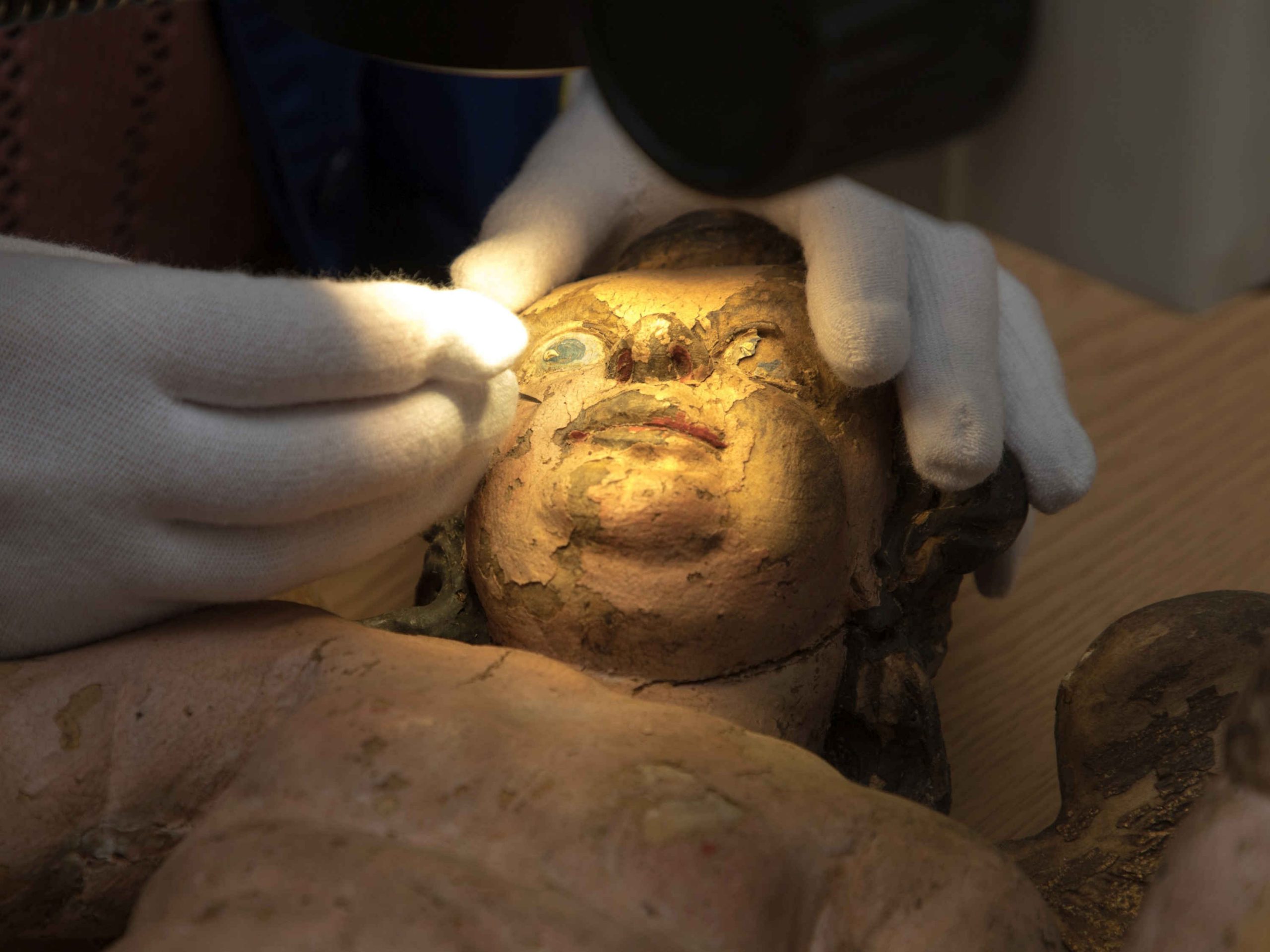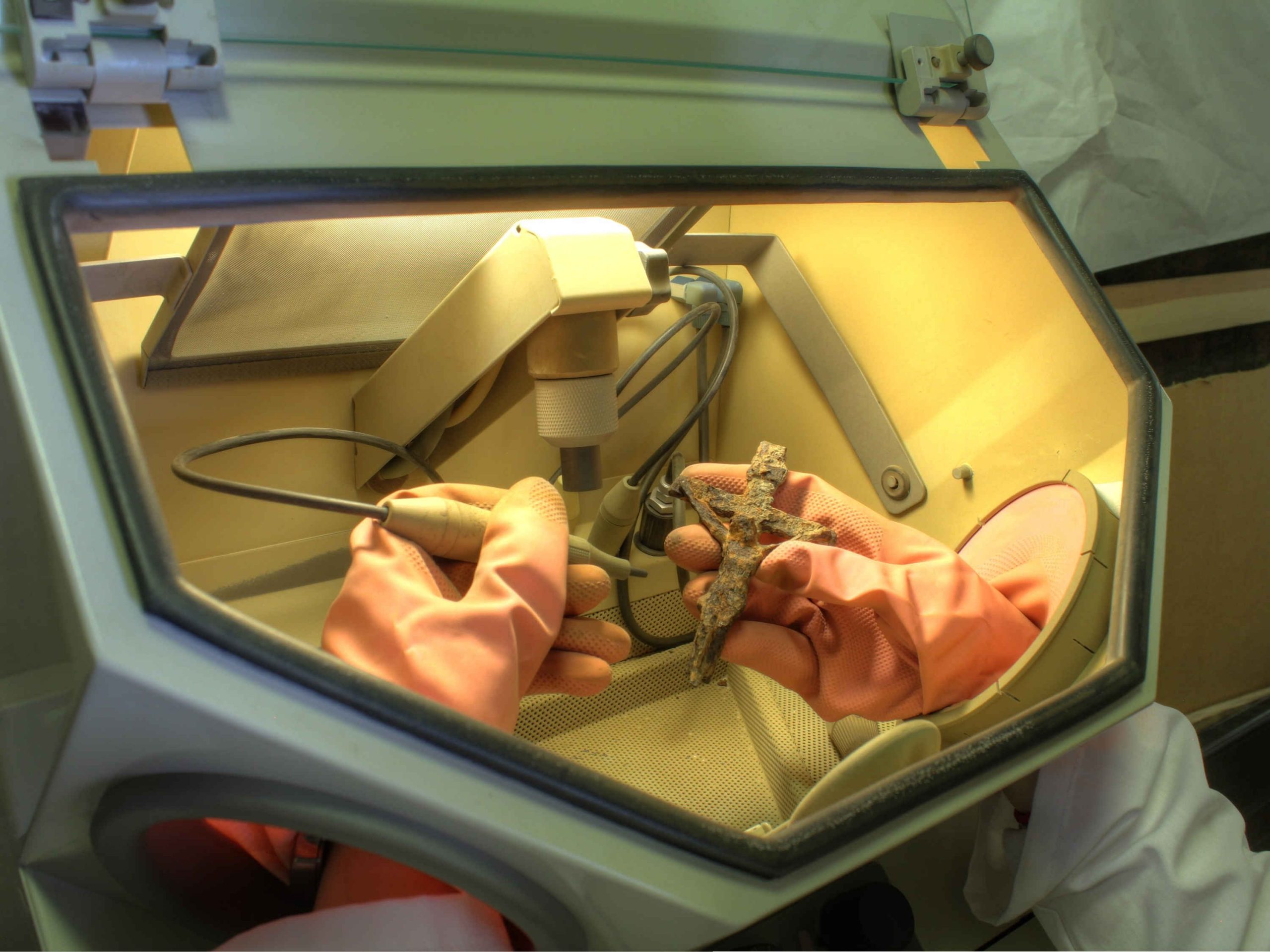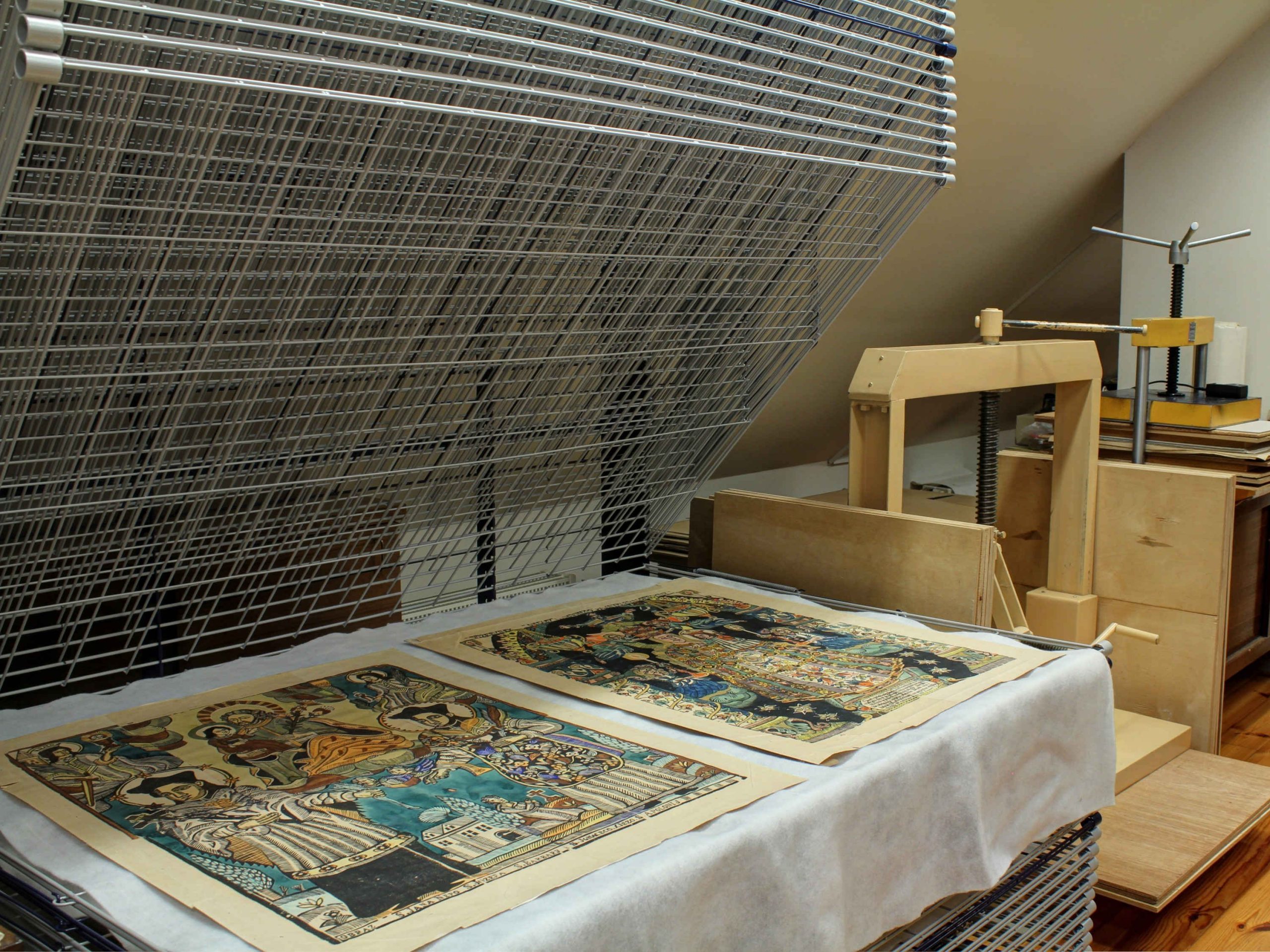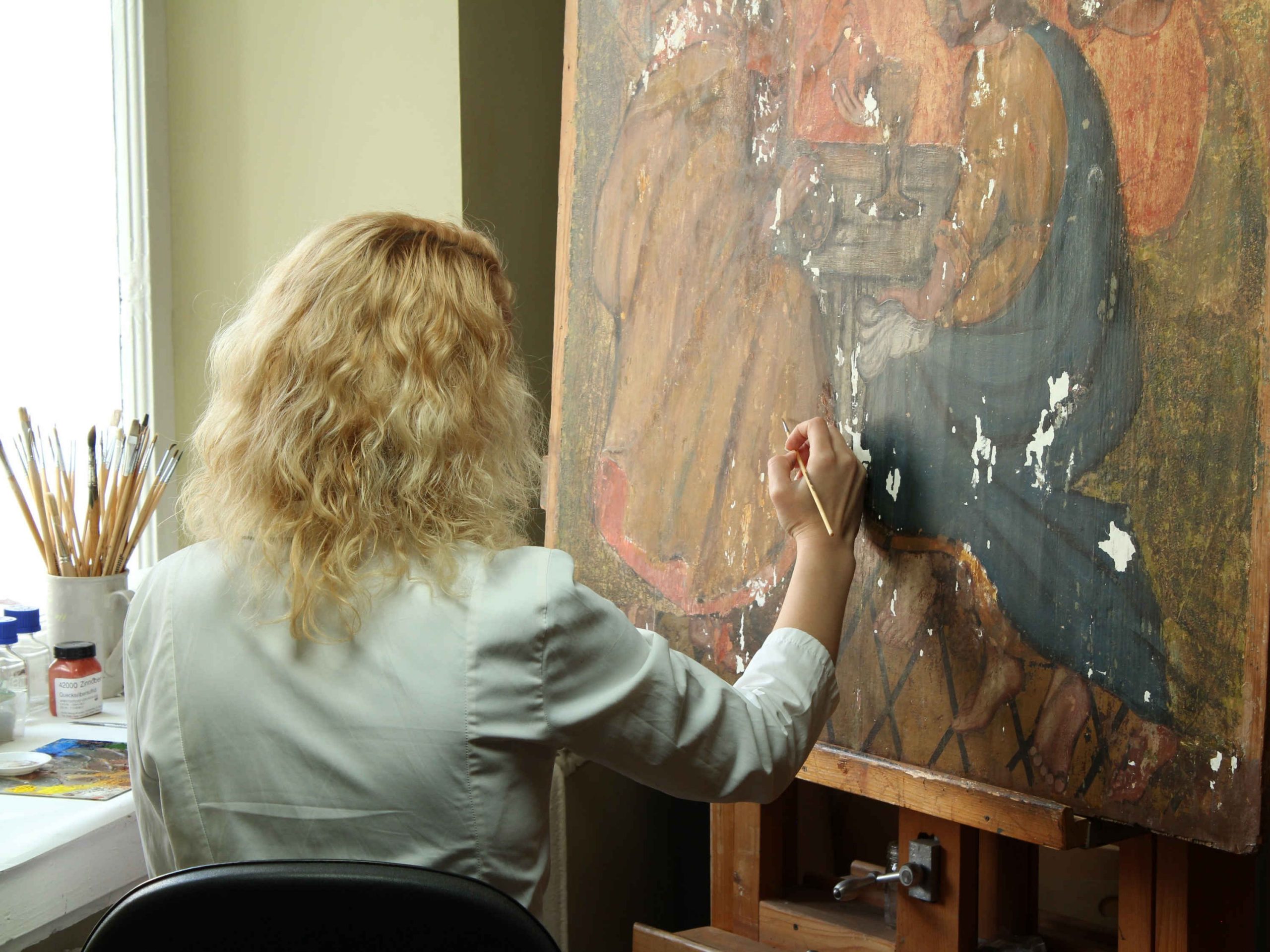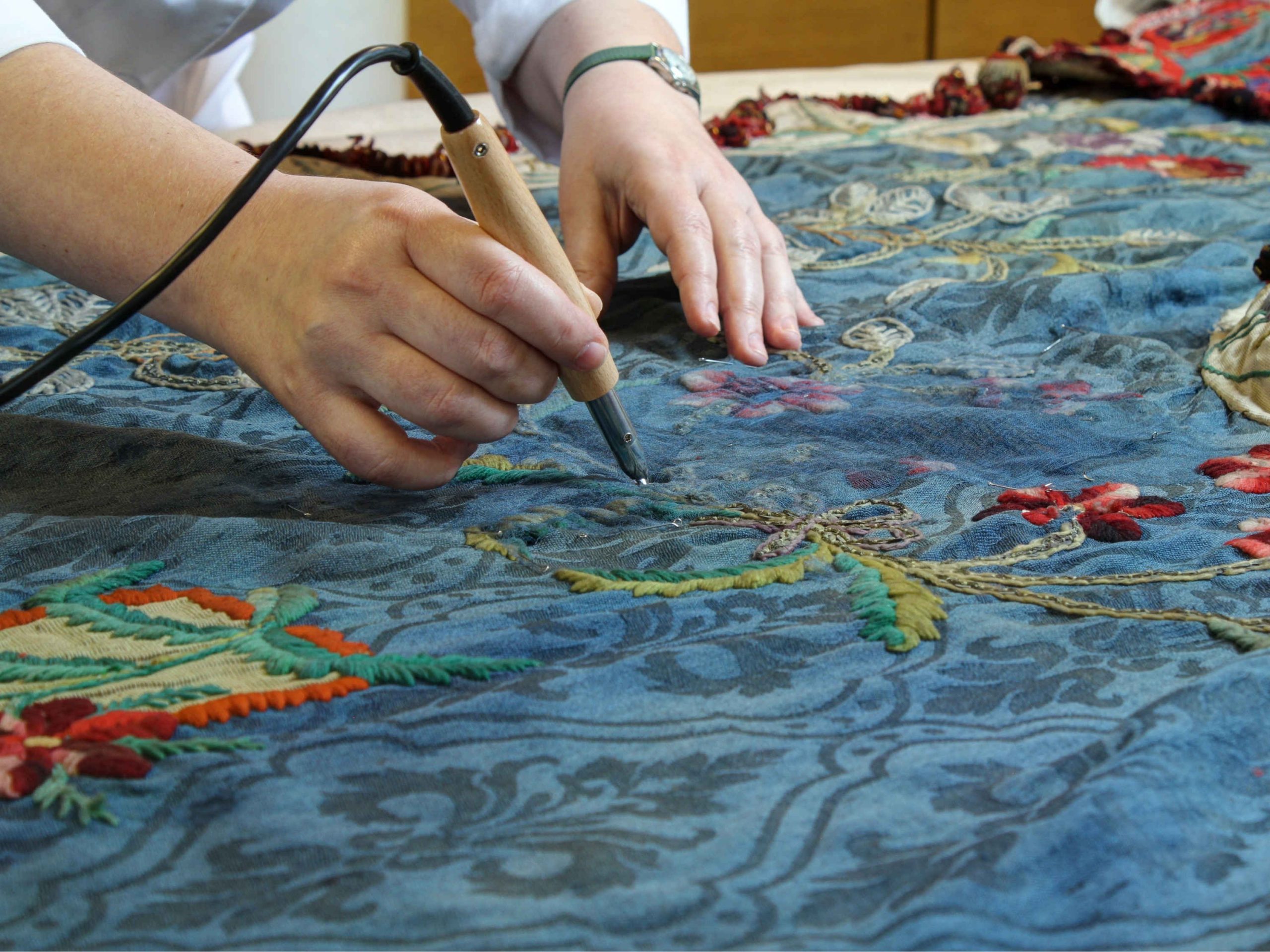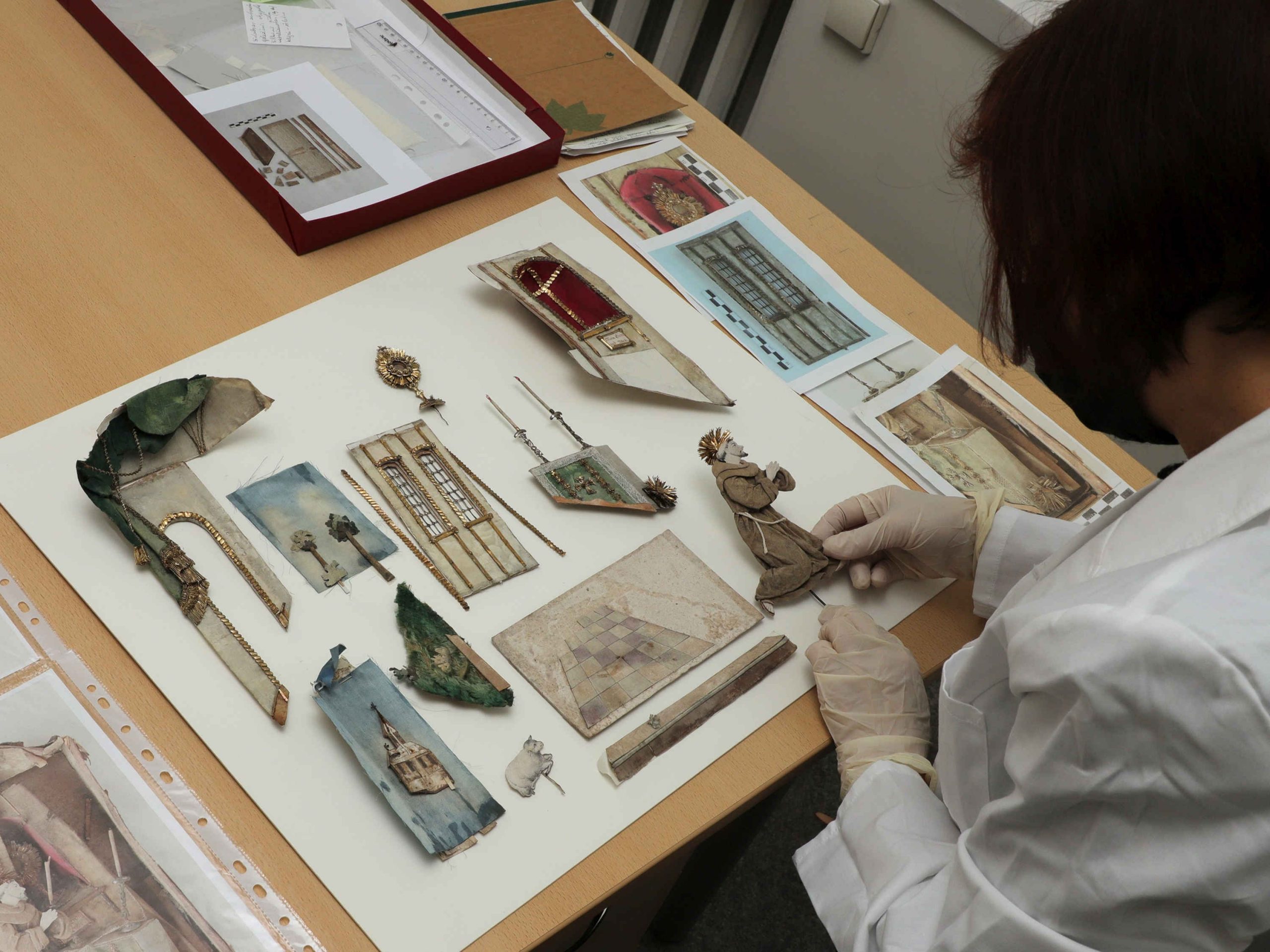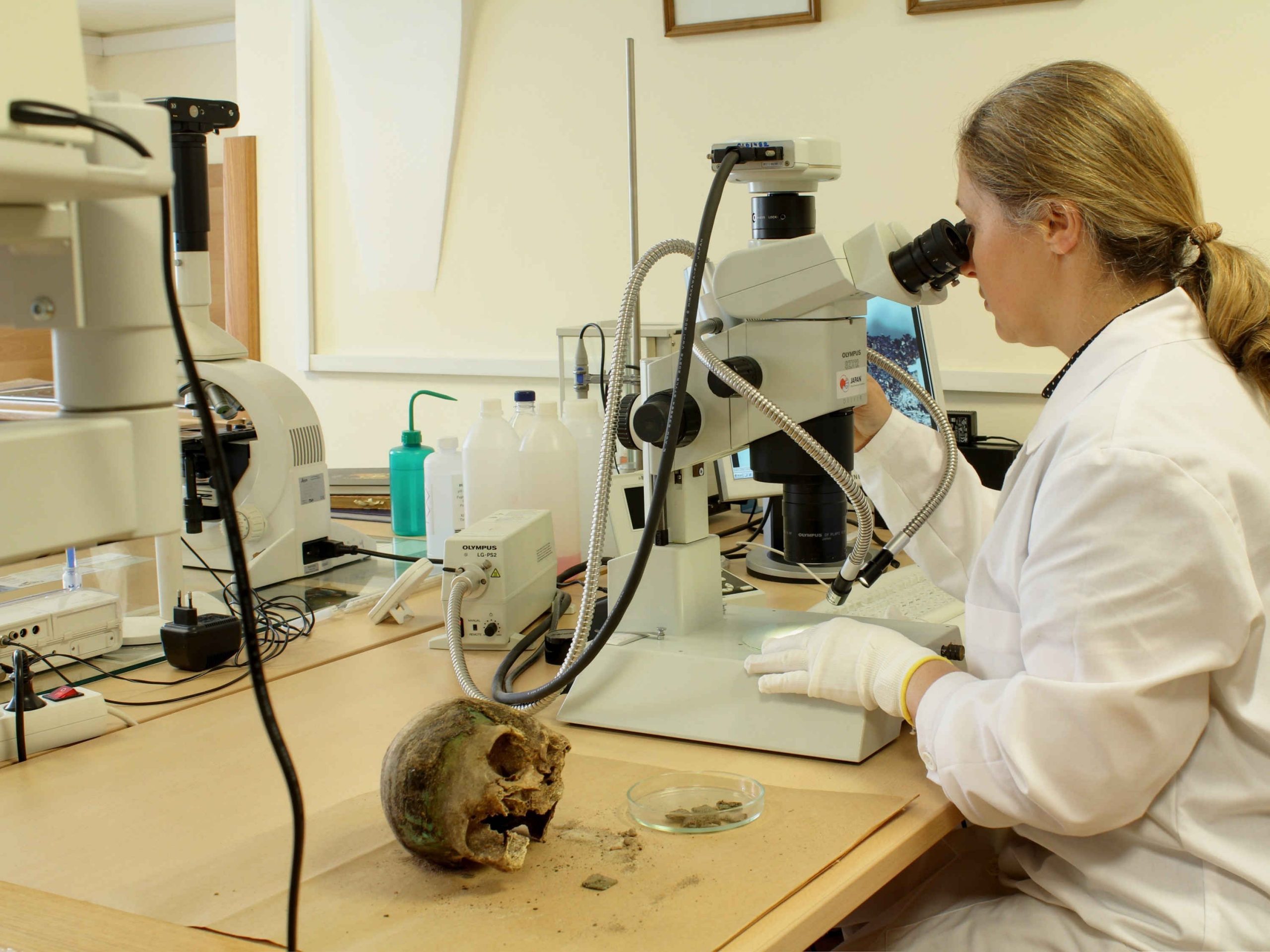Conservation
The activity of the Conservation Centre is aimed to help protect and exhibit the treasures of Lithuanian culture by research and conservation.
The centre performs the following functions:
- Technological, physical and chemical analysis of museum pieces,
- Conservation and restoration of museum pieces,
- Preventive conservation,
- Continuous improvement of the professional skills and knowledge of conservators.
In the Conservation Centre, archaeological finds, ceramic, metal, wood and polychrome artefacts, textile, easel painting, documents and books are conserved and restored. More than 4,000 exhibits are conserved and restored each year. The conservators working at the Centre also perform preventive conservation – a computerized system of microclimate control has been installed in depositories and exhibition halls, and the condition of the exhibits is constantly monitored. Recommendations on the issues of preservation, transportation and exhibition, field conservation and safe extraction of archaeological finds are provided. Works on various topics of the protection, research and conservation of cultural treasures prepared by conservators and researchers of the National Museum of Lithuania as well as other institutions are published in the serial publication Restauravimo metodika (Conservation Methods).
Conservators are assessed according to the procedure prescribed by the Ministry of Culture of the Republic of Lithuania.
The Conservation center restores:
In this group, archaeological finds dated from the 11th millennium BC to the 19th century, and made from various materials – metal, wood, textile, leather, bone, amber and glass – are restored and conserved. The following processes are performed:
- disinfection,
- mechanical and chemical cleaning and washing,
- consolidation with synthetic polymers,
- gluing of fragments,
- reconstruction of lost parts,
- covering with protective coatings,
- in some cases, referring to archaeological material or analogues, reconstruction of an entire archaeological artefact is performed.
In the ceramics group, archaeological, ethnographic and historical artefacts of ceramics, glass, porcelaine, gypsum and stone – urns, crockery, tiles, sculptures, decorative sculptures, medals, jewellery etc. – are conserved and restored.
Depending on the object, the following conservation and restoration processes are performed:
- mechanical and chemical cleaning and washing of the surface,
- consolidation with synthetic polymers,
- gluing of fragments,
- reconstruction of shape and design,
- covering with protective coatings.
In the wood and polychromy group, the following wooden carved, polychromed, lacquered, gilded and wickerwork historical and ethnographic objects and artworks are conserved and restored:
- sculptures,
- household utensils,
- frames,
- furniture.
Wood and polychrome objects are disinsected and cleaned; the wood and polychrome layers and the construction of the artefact are consolidated. Subsequent overpaints are removed revealing an authentic layer, obliterate polychrome sections are reproduced by priming and retouching, and the missing details are reproduced according to analogues and covered with a protective coating. In restoring the frames, the frame construction is consolidated, the missing elements are cast from plaster or carved from wood, and the leafing is reproduced using precious metals or their substitutes.
In the metal group, various historical and ethnographic exhibits and their parts made from various metals and their alloys are conserved and restored.
In conserving and restoring historical metal, the following processes are performed:
- surface cleaning by using mechanical, chemical or electrochemical methods,
- passivation of surface and corrosion inhibition,
- consolidation with synthetic polymers,
- straightening of deformities,
- leafing,
covering with protective coatings,
reconstruction of missing details.
In the paper group, various manuscript and printed documents: books, maps, plans, artworks etc. are conserved, restored and prepared for display and storage.
Paper restoration includes the following procedures:
- documents are disinfected, their surface is cleaned and deformities are removed,
- inadequate materials used in previous restorations (glue, adhesive tape etc.) are removed,
- tears are glued, fragments are reconstructed,
- if necessary, stains are removed, paper is washed, alkalized and reinforced,
- special folders and cases for storage are produced.
The painting group is in charge of the conservation and restoration of works of early and contemporary easel painting executed in various techniques on canvas, wood, metal, glass or other basis:
- egg tempera,
- oil painting,
- acrylic and tempera painting,
- mixed technique.
In conserving and restoring painting works, the base is consolidated and its deformations are removed, the painting layer is consolidated, overpaintings are removed, surface dirt is cleaned, the varnish layer is thinned, obliterated sections are primed and retouched, and the processes of disinfection and disinsection are performed.
In the textile group, the following textile artefacts made from natural and synthetic materials, as well as parts of textile artefacts are conserved and restored:
- church textile,
- historical and ethnographical clothing,
- household utensils,
- jewellery.
In conserving and restoring textile exhibits, chemical or mechanical cleaning and washing is performed. In restoring the missing parts, original techniques or their imitations are used. The larger part of textile exhibits are prepared for long-term storage.
In preserving and restoring museum exhibits, it is important to know the nature of their materials and the execution technique, and to assess their condition. Chemical and physical analysis performed in the laboratory helps to choose adequate restoration or conservation methods and make a list of necessary procedures.
The analysis of the materials and techniques of a given exhibit can often provide important historical and cultural information not only to conservators, but also to art historians, museologists and archaeologists.
The laboratory accumulates and systemizes research material, on the basis of which conservation methods are analysed, or new technological solutions for conservation are offered.
The Conservation Centre Laboratory performs the following procedures:
- optical microscopy,
- microchemical analysis,
- FTIR microspectroscopy,
- XRF analysis.


